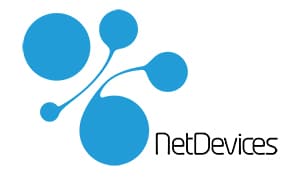NetDevices explore le DevOps.
Qu’est-ce que le DevOps ?
Le terme DevOps provient de la fusion des mots “Development” (développement) et “Operations” (opérations). Il représente une philosophie, axée sur les “geeks”. Elle encourage un changement de mentalité et une collaboration accrue entre les équipes de développement et d’opérations.
C’est une approche qui automatise et optimise les processus entre les équipes de développement logiciel et les équipes informatiques opérationnelles. Ceci permet donc de créer, tester et déployer des logiciels plus rapidement et de manière fiable. Le DevOps brise les barrières entre les équipes de développement et les équipes informatiques opérationnelles. Elles travaillent ensemble tout au long du cycle de vie des applications logicielles (ex. : développement, les tests, déploiement et l’exploitation).
Quels sont les avantages du DevOps ?
- Qualité et efficacité : un code amélioré et des processus mieux définis
- Amélioration du temps de déploiement : optimisation du temps de développement et anticipation renforcée
- Meilleure communication entre les développeurs et les métiers
- Livraison rapide et fréquente de versions de petite taille
- Réduction des risques et des retours en arrière
- Diminution des coûts à long terme
Comment fonctionne l’approche DevOps ?
Le DevOps est une méthode qui améliore les processus tout au long du cycle de vie du développement logiciel. Le processus ressemble à une “boucle sans fin”, qui commence par la planification du logiciel. Il passe ensuite par les phases de codage, de construction, de test et de lancement, avant de revenir à la planification via le déploiement, l’exploitation, la surveillance continue et le retour d’information. Idéalement, le DevOps permet aux équipes de développeurs de créer des logiciels qui répondent parfaitement aux besoins des utilisateurs. Ces logiciels se déploient rapidement et fonctionnent de manière optimale dès leur première utilisation.
Les principales méthodes et principes DevOps
Les anciennes méthodes de développement logiciel agiles continuent d’influencer les pratiques et les outils DevOps. De nombreuses méthodes, notamment Scrum et Kanban, intègrent des éléments de la programmation agile. Cette dernière se caractérise par une plus grande réactivité aux besoins changeants, la réalisation de stand-ups quotidiens et l’intégration du feedback continu des clients. L’approche Agile préconise également des cycles de développement logiciel plus courts par rapport aux méthodes de développement traditionnelles en cascade.
Scrum
Scrum définit la manière dont les membres d’une équipe doivent collaborer pour accélérer les projets de développement et d’assurance qualité. Ainsi, les pratiques comprennent des flux de travail importants et des termes spécifiques (sprints, créneaux horaires, réunion Scrum quotidienne) ainsi que certains rôles (Scrum Master, Product Owner).
Kanban
Kanban né à partir des gains d’efficacité réalisés dans l’usine Toyota. Il stipule effectivement que l’état des projets logiciels en cours doit être suivi sur une carte Kanban. Le nombre de travaux parallèles, le Work in Progress (WiP), est limité. Par conséquent, les délais d’exécution se raccourcissent et les problèmes se distinguent rapidement, notamment les goulots d’étranglement.


